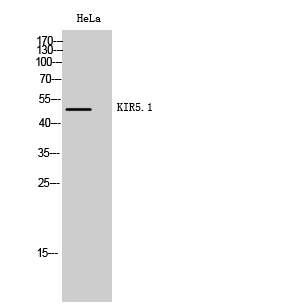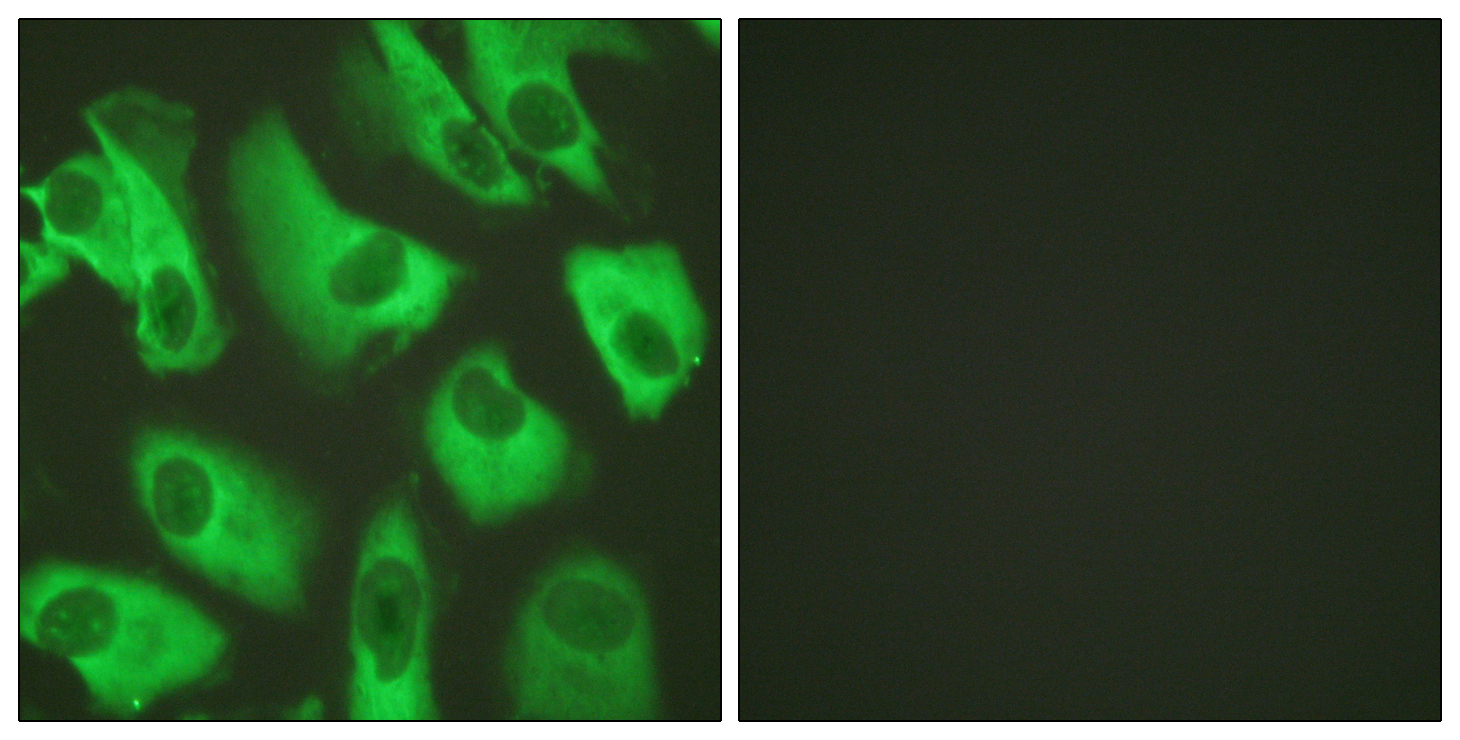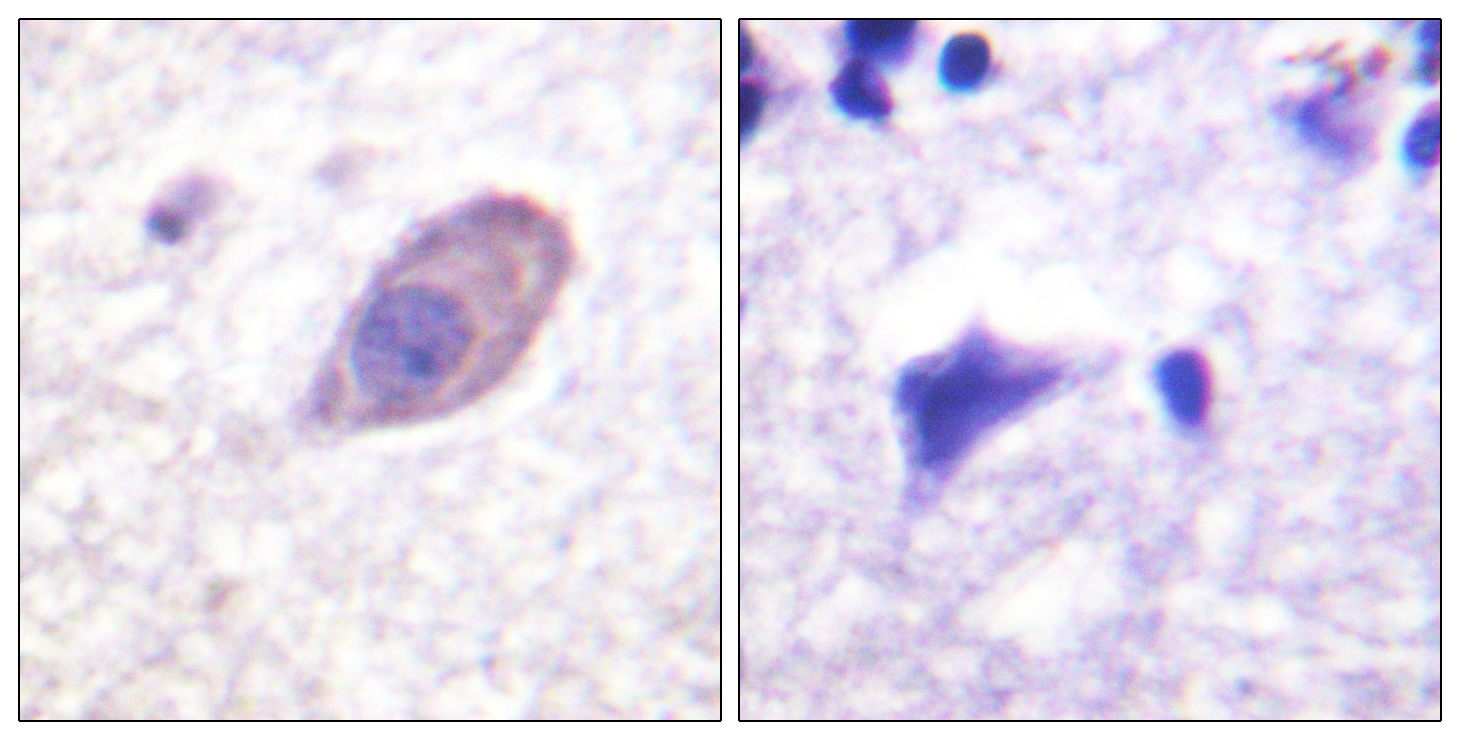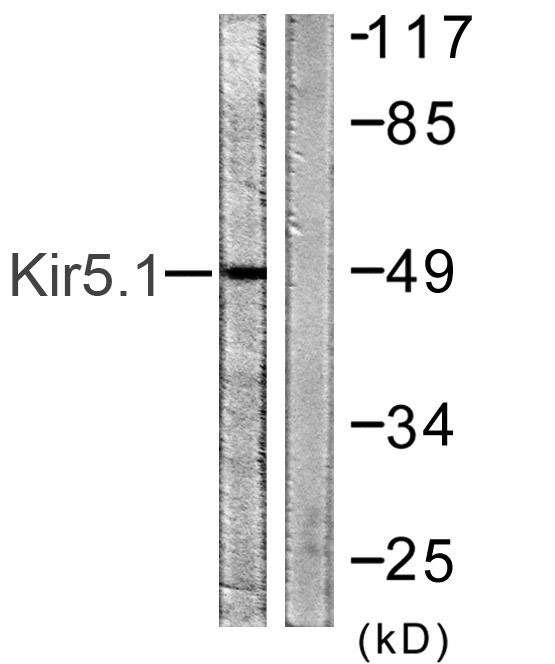KIR5.1 Polyclonal Antibody
- 货号:YT2478
- 应用:WB;IHC;IF;ELISA
- 种属:Human;Mouse;Rat
- 简介:
- >>Gastric acid secretion
- 蛋白名称:
- Inward rectifier potassium channel 16
- 免疫原:
- The antiserum was produced against synthesized peptide derived from mouse Kir5.1. AA range:369-418
- 特异性:
- KIR5.1 Polyclonal Antibody detects endogenous levels of KIR5.1 protein.
- 组成:
- Liquid in PBS containing 50% glycerol, 0.5% BSA and 0.02% sodium azide.
- 来源:
- Polyclonal, Rabbit,IgG
- 稀释:
- WB 1:500 - 1:2000. IHC 1:100 - 1:300. IF 1:200 - 1:1000. ELISA: 1:10000. Not yet tested in other applications.
- 纯化工艺:
- The antibody was affinity-purified from rabbit antiserum by affinity-chromatography using epitope-specific immunogen.
- 储存:
- -15°C to -25°C/1 year(Do not lower than -25°C)
- 其他名称:
- KCNJ16;Inward rectifier potassium channel 16;Inward rectifier K(+) channel Kir5.1;Potassium channel; inwardly rectifying subfamily J member 16
- 背景:
- Potassium channels are present in most mammalian cells, where they participate in a wide range of physiologic responses. The protein encoded by this gene is an integral membrane protein and inward-rectifier type potassium channel. The encoded protein, which tends to allow potassium to flow into rather than out of a cell, can form heterodimers with two other inward-rectifier type potassium channels. It may function in fluid and pH balance regulation. Alternatively spliced transcript variants have been found for this gene. [provided by RefSeq, Apr 2014],
- 功能:
- function:Inward rectifier potassium channels are characterized by a greater tendency to allow potassium to flow into the cell rather than out of it. Their voltage dependence is regulated by the concentration of extracellular potassium; as external potassium is raised, the voltage range of the channel opening shifts to more positive voltages. The inward rectification is mainly due to the blockage of outward current by internal magnesium. KCNJ16 may be involved in the regulation of fluid and pH balance.,similarity:Belongs to the inward rectifier-type potassium channel family.,subunit:Seems to form heterodimer with Kir4.1/KCNJ10 or Kir2.1/KCNJ2.,tissue specificity:Highly expressed in kidney, pancreas and thyroid gland.,
- 细胞定位:
- Membrane ; Multi-pass membrane protein. Basolateral cell membrane . In kidney distal convoluted tubules, located in the basolateral membrane in the presence of KCNJ10. .
- 组织表达:
- Widely expressed, with highest levels in adult and fetal kidney (at protein level). In the kidney, expressed in the proximal and distal convoluted tubules, but not in glomeruli nor collecting ducts.

- Western Blot analysis of HeLa cells using KIR5.1 Polyclonal Antibody

- Immunofluorescence analysis of HeLa cells, using Kir5.1 Antibody. The picture on the right is blocked with the synthesized peptide.

- Immunohistochemistry analysis of paraffin-embedded human brain tissue, using Kir5.1 Antibody. The picture on the right is blocked with the synthesized peptide.

- Western blot analysis of lysates from HeLa cells, using Kir5.1 Antibody. The lane on the right is blocked with the synthesized peptide.







